You're evaluating window treatment solutions for your next project but struggling with manual operation complexity and client demands for smart automation. Traditional blinds require constant adjustment and lack the sophisticated control modern spaces demand.
Automatic roller blinds are motorized window treatments that operate through electronic controls, smartphone apps, or smart home integration. They combine convenience with energy efficiency, offering precise light control and scheduling capabilities that reduce operational costs by up to 25% while enhancing user comfort and building automation systems.
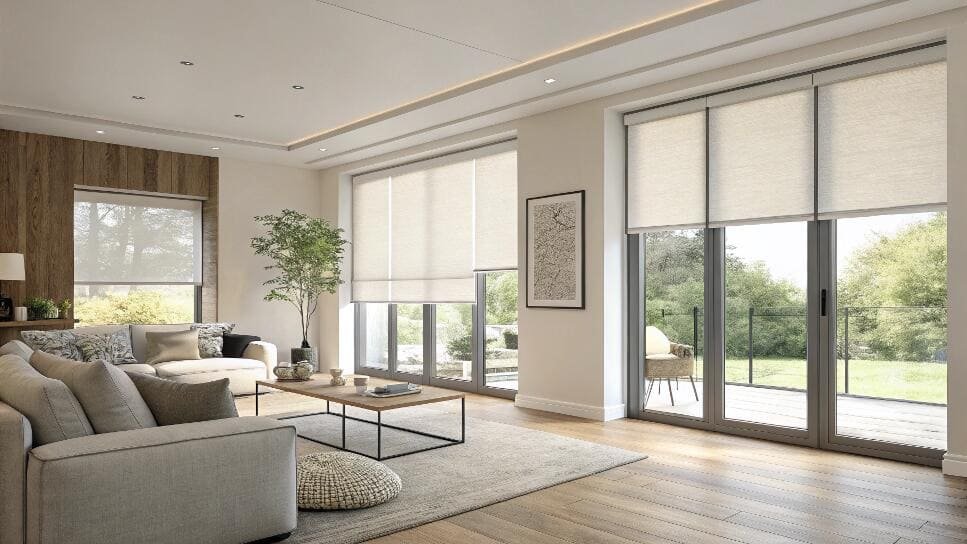
The shift toward automated building systems has made manual window treatments increasingly obsolete. As project requirements evolve toward smart integration and energy efficiency[^1], understanding the technology behind automatic roller blinds becomes crucial for successful implementations.
How do automatic roller blinds work?
Manual window adjustments throughout the day waste time and energy, especially in commercial spaces with multiple windows. Traditional systems require constant human intervention and cannot respond to changing environmental conditions automatically.
Automatic roller blinds use tubular motors embedded in the headrail that connect to control systems through WiFi, Z-wave, or hardwired protocols. The motor drives a roller mechanism that raises or lowers fabric panels with precise positioning control, integrated with sensors for automated operation based on light levels, temperature, or scheduled programming.
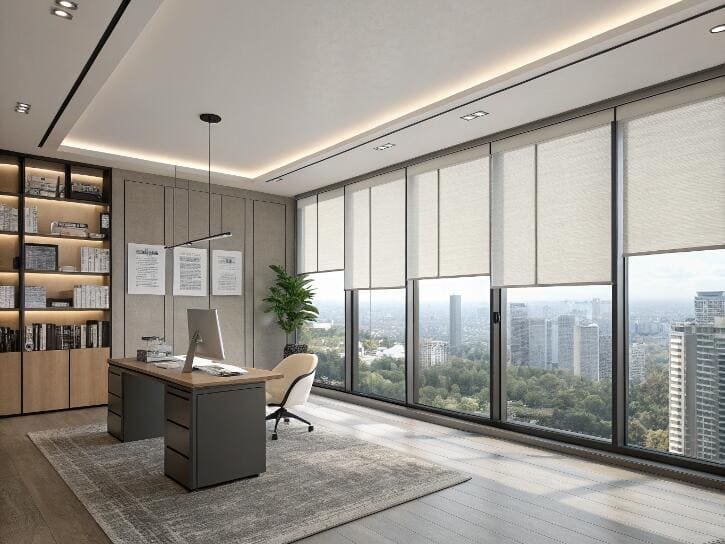
The technology behind automatic roller blinds involves several interconnected components working together. The tubular motor sits inside the roller tube, typically ranging from 25mm to 45mm in diameter depending on window size and fabric weight. These motors operate on either 12V DC battery power or 120V/240V AC hardwired systems[^2].
Control systems connect through multiple protocols. WiFi-enabled blinds integrate directly with building management systems and smartphone apps. Z-wave connectivity allows mesh networking across multiple blinds for synchronized operation. Hardwired systems provide the most reliable connection but require electrical infrastructure during installation.
Positioning accuracy depends on the motor's encoder system. High-quality motors achieve positioning accuracy within 1-2mm, enabling precise light control and consistent operation. The control algorithms can process inputs from light sensors, temperature sensors, and occupancy detectors to automatically adjust blind positions throughout the day.
Smart integration capabilities extend beyond basic up/down movement. Advanced systems support tilt adjustment for venetian-style blinds, group control for multiple windows, and scene programming for different lighting conditions. Integration with HVAC systems allows coordinated operation to optimize energy efficiency.
What is the difference between motorized and automatic?
The terms "motorized" and "automatic" are often used interchangeably, but they represent different levels of sophistication in window treatment technology. This distinction affects functionality, cost, and integration capabilities.
Motorized blinds simply have an electric motor for operation but require manual activation through remotes or wall switches. Automatic blinds feature programmable controls, sensors, and smart home integration that enable autonomous operation based on environmental conditions, schedules, or building management system inputs without human intervention.
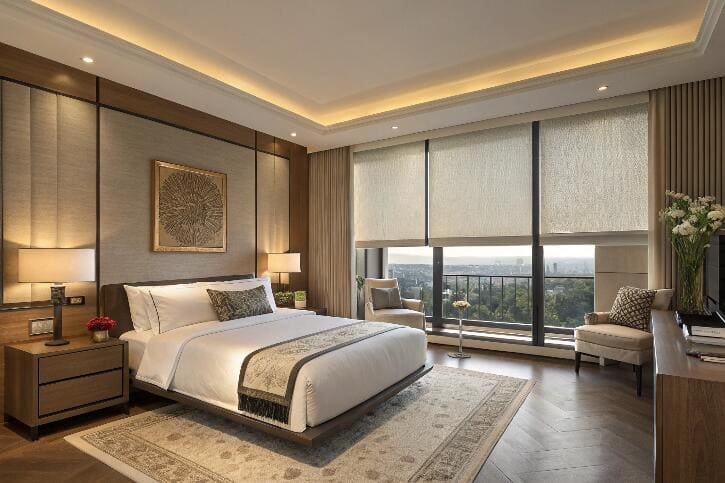
Motorized blinds represent the first level of blind automation. They eliminate the physical effort of manual operation but still require human decision-making for each adjustment. Users must press buttons on remotes or wall switches to raise, lower, or adjust blinds. While convenient, this approach doesn't address the fundamental challenge of optimizing light and temperature control throughout the day.
Automatic blinds incorporate intelligence into the system. They use environmental sensors to detect light levels, temperature changes, and occupancy patterns. Programming allows the system to respond automatically to these inputs. For example, blinds can close when direct sunlight hits windows to reduce cooling loads, then reopen when the sun passes to maintain natural lighting.
The control sophistication differs significantly. Motorized systems typically offer basic up/down movement with intermediate positioning. Automatic systems provide precise percentage-based positioning, tilt angle control, and complex scheduling. Integration capabilities also vary - motorized blinds might connect to basic smart home systems, while automatic blinds integrate with building automation platforms for comprehensive facility management.
Cost implications reflect this sophistication difference. Motorized blinds typically cost 2-3 times more than manual blinds, while fully automatic systems with sensors and smart integration can cost 4-6 times more. However, the energy savings and operational efficiency gains from automatic systems often justify the higher investment in commercial applications.
Are automated blinds worth it?
Project budgets face increasing scrutiny, and every technology investment must demonstrate clear value. Automated blinds represent a significant upfront cost that requires careful analysis of benefits against total project expenditure.
Automated blinds provide measurable ROI through energy savings (15-25% HVAC reduction[^3]), reduced maintenance costs, enhanced occupant comfort, and increased property value. Commercial installations typically achieve payback within 3-5 years, while residential applications offer lifestyle benefits that justify costs for high-end projects.
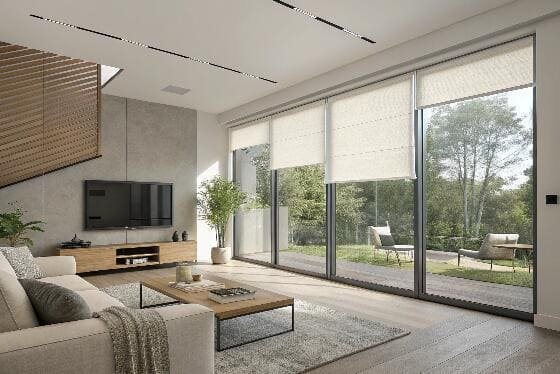
The financial case for automated blinds depends on building type, climate, and usage patterns. In commercial applications, the energy savings alone often justify the investment. Automated blinds reduce solar heat gain during peak cooling periods, potentially saving 15-25% on HVAC costs. A 50,000 square foot office building might save $15,000-30,000 annually in energy costs.
Labor cost reductions provide additional savings. Manual blind adjustment requires facility staff time, especially in large buildings. Automated systems eliminate this ongoing labor cost while ensuring consistent light control throughout the building. For facilities with shift work or 24/7 operations, automated blinds provide appropriate lighting conditions without requiring staff intervention.
Occupant comfort improvements translate to productivity gains[^4]. Studies show that proper daylighting control can increase productivity by 6-16%. While difficult to quantify precisely, this productivity improvement often exceeds the cost of the blind system in commercial applications.
Property value enhancement varies by market and building type. Class A office buildings increasingly require automated systems to compete effectively. Residential properties in high-end markets see automated blinds as expected amenities rather than luxury features.
Maintenance considerations affect long-term value. Quality automated blind systems have 10-15 year lifespans with minimal maintenance requirements. This compares favorably to manual systems that may require cord replacement, mechanism repair, or more frequent fabric replacement due to inconsistent operation.
Are motorised blinds a good idea?
The decision to implement motorized blinds involves weighing convenience benefits against costs, complexity, and potential reliability issues. Different applications have varying requirements that affect the suitability of motorized solutions.
Motorized blinds excel in applications with hard-to-reach windows, large or heavy window treatments, safety concerns with cords, or frequent adjustment needs. They're particularly valuable in commercial spaces, high-end residential projects, and buildings with extensive glazing where manual operation would be impractical.
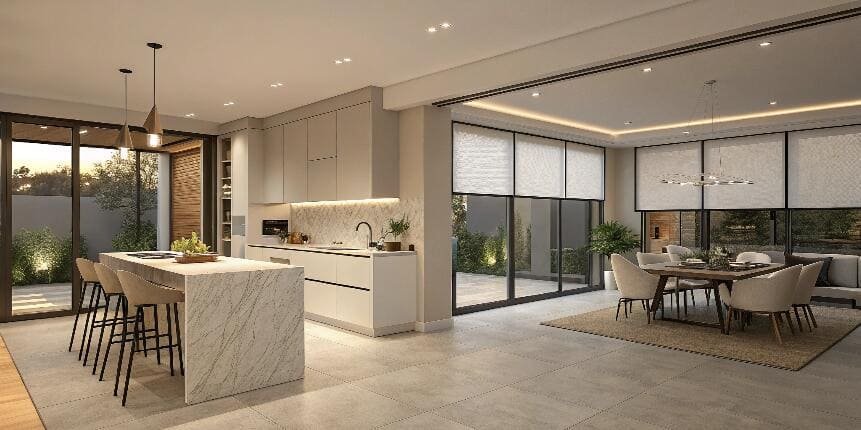
Window accessibility represents the primary driver for motorization. Windows above standard reach, in stairwells, or behind furniture make manual operation difficult or impossible. Motorized systems eliminate these accessibility challenges while ensuring consistent operation across all windows.
Size and weight considerations often necessitate motorization. Large windows require blinds with substantial fabric area and corresponding weight. Manual operation becomes difficult or impossible as blind size increases. Motorized systems handle large blinds effortlessly while providing precise positioning control.
Safety regulations increasingly favor motorized systems. Corded blinds pose strangulation risks, particularly in spaces accessible to children. Motorized blinds eliminate cords entirely, meeting safety standards while providing superior operation.
Frequency of adjustment affects the value proposition. In spaces requiring frequent light adjustment throughout the day, motorized operation saves significant time and effort. Conference rooms, classrooms, and patient rooms benefit from quick, quiet adjustment without disrupting activities.
Integration requirements in modern buildings often mandate motorized systems. Building automation systems, security systems, and energy management platforms require electronic control interfaces. Manual blinds cannot integrate with these systems, limiting their suitability for modern facilities.
Cost-effectiveness depends on specific project requirements. Basic motorized systems add $200-500 per window compared to manual alternatives. This premium proves worthwhile when weighted against the benefits in appropriate applications.
What are the disadvantages of motorized blinds?
While motorized blinds offer significant advantages, they also present challenges that must be addressed during project planning. Understanding these limitations helps set realistic expectations and avoid implementation problems.
Primary disadvantages include higher initial costs (3-5x manual systems), dependence on electrical power, increased complexity requiring professional installation, potential connectivity issues, and ongoing maintenance needs for motors and control systems that may require specialized service.
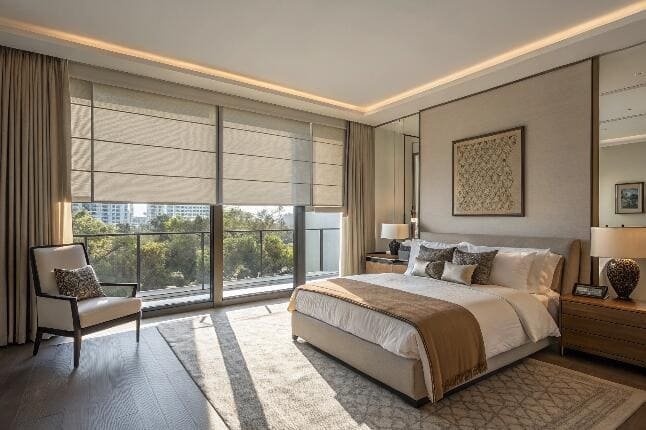
Cost implications extend beyond initial purchase prices. Motorized blinds require electrical infrastructure, professional installation, and ongoing maintenance. Total installed costs typically range from $300-800 per window compared to $50-150 for manual systems. These costs multiply across large projects, potentially impacting overall budgets.
Power dependence creates operational vulnerabilities. Hardwired systems require electrical rough-in during construction, increasing coordination complexity. Battery-powered systems need regular charging or replacement, creating maintenance schedules. Power outages can leave blinds inoperable, though many systems include manual override mechanisms.
Installation complexity requires specialized expertise. Proper motor sizing, control system configuration, and integration with building systems demand technical knowledge beyond typical window treatment installation. This specialization increases installation costs and can limit available contractors.
Reliability concerns affect long-term performance. Motors contain moving parts that wear over time. Control systems may experience software issues or connectivity problems. While quality systems provide 10-15 year lifespans, they require more maintenance than manual alternatives.
Connectivity challenges arise with smart systems. WiFi-dependent blinds may experience network issues, requiring robust infrastructure. Integration with building management systems[^5] requires compatible protocols and professional programming. System updates and troubleshooting need technical support.
User training becomes necessary for complex systems. Multiple control methods (apps, remotes, wall switches) can confuse users. Programming features require explanation and documentation. This training overhead adds to project delivery requirements.
Do motorized blinds have to be plugged in?
Power requirements for motorized blinds vary significantly based on system type, affecting installation complexity, ongoing maintenance, and operational reliability. Understanding power options helps select appropriate solutions for different applications.
Motorized blinds use either hardwired AC power (120V/240V) or battery systems (12V DC). Hardwired systems provide continuous power but require electrical infrastructure. Battery systems offer installation flexibility but need regular charging or replacement every 6-12 months depending on usage frequency.
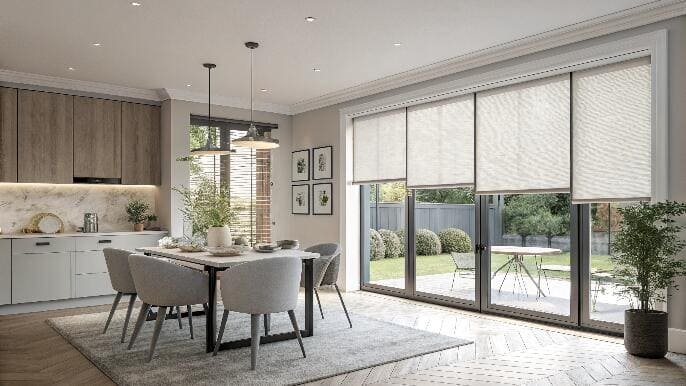
Hardwired systems connect directly to building electrical systems through low-voltage wiring. These installations require electrical rough-in during construction or renovation, adding coordination complexity and cost. However, they provide unlimited power and eliminate battery maintenance. Hardwired systems typically use 12V or 24V DC power supplied by centralized transformers.
Battery-powered systems offer significant installation advantages. They eliminate electrical wiring requirements, allowing installation in existing buildings without electrical modifications. Modern lithium-ion batteries provide 6-12 months of operation depending on usage frequency. Some systems include solar charging options for extended battery life.
Hybrid systems combine both power sources. They operate on hardwired power during normal operation but include battery backup for outages. This approach provides operational continuity while maintaining installation flexibility.
Power consumption varies by motor size and usage patterns. Typical motors consume 25-50 watts during operation but draw minimal standby power. Daily energy consumption rarely exceeds 0.1 kWh per blind, making operational costs negligible.
Solar charging systems represent an emerging option. These systems combine battery operation with solar panels for continuous charging. While more expensive initially, they eliminate battery replacement costs and provide sustainable operation.
Installation considerations affect power choice. New construction projects can easily accommodate hardwired systems. Retrofit applications often favor battery systems due to installation simplicity. Building codes may require hardwired systems for fire safety integration.
How much more expensive are motorized blinds?
Cost analysis of motorized blinds requires understanding multiple cost components beyond initial purchase prices. Total project costs include equipment, installation, integration, and ongoing maintenance expenses that vary significantly by system type and application.
Motorized blinds cost 300-500% more than manual alternatives, with basic systems starting at $300-500 per window compared to $50-150 for manual blinds. Total installed costs including motors, controls, and professional installation typically range from $500-1200 per window, with smart integration adding $100-300 per window.

Equipment costs form the largest component. Basic motorized roller blinds start around $300-400 per window for standard sizes. Battery-powered systems cost $50-100 more than hardwired versions. Smart integration with WiFi capability adds $100-200 per window. Premium systems with advanced features can exceed $800 per window.
Installation costs reflect system complexity. Manual blinds typically require 1-2 hours installation time, while motorized systems need 3-4 hours for electrical connections, programming, and testing. Professional installation rates of $75-150 per hour mean installation costs of $225-600 per window.
Integration expenses vary by system sophistication. Basic remote-controlled systems require minimal integration costs. Smart home integration adds $100-200 per window for programming and configuration. Building automation system integration can add $300-500 per window for complex installations.
Ongoing costs include maintenance and power consumption. Battery replacement costs $50-100 per window annually for battery-powered systems. Professional service calls cost $150-300 per visit. Hardwired systems have lower ongoing costs but may require electrical maintenance.
Volume pricing affects project economics. Manufacturers offer significant discounts for projects over 25-50 windows. Bulk pricing can reduce per-window costs by 20-30%. Installation efficiency also improves with volume, reducing labor costs per window.
Regional variations affect total costs. Urban markets typically have higher installation labor rates but more competitive equipment pricing. Rural areas may have limited installation expertise, increasing costs. International projects face additional shipping and duty costs.
What is the life expectancy of motorized blinds?
Service life expectations for motorized blinds affect total cost of ownership and replacement planning. Understanding lifecycle factors helps evaluate long-term value and budget for future maintenance or replacement needs.
Quality motorized blinds typically last 10-15 years with proper maintenance, while motors may require replacement after 8-12 years depending on usage frequency. Fabric components last 7-10 years, and control systems may need updates every 5-8 years to maintain compatibility with evolving building automation systems.
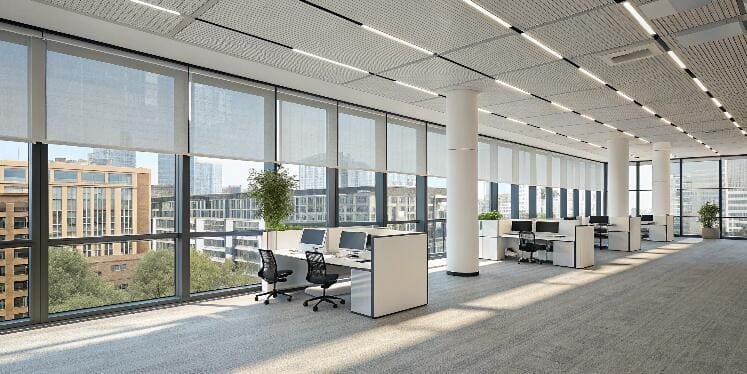
Motor lifespan depends on quality, usage patterns, and environmental conditions. Premium motors with proper sizing and installation typically operate 50,000-100,000 cycles before requiring replacement. Daily operation translates to 8-15 years of service life. Oversized motors last longer than undersized ones, making proper sizing crucial for longevity.
Fabric degradation occurs from UV exposure, temperature cycling, and mechanical stress. High-quality fabrics with UV protection last 10-15 years in typical applications. South-facing windows experience more UV exposure, reducing fabric life to 7-10 years. Frequent operation increases mechanical stress, potentially reducing fabric life by 2-3 years.
Control system obsolescence affects functional lifespan. Electronic components may function for 15-20 years, but software compatibility issues arise more frequently. Smart home protocols evolve rapidly, potentially requiring control system updates every 5-8 years. Building automation system changes may necessitate earlier upgrades.
Environmental factors significantly impact longevity. Coastal environments with salt air accelerate corrosion. High-humidity areas affect electronic components. Extreme temperatures stress motors and fabrics. Proper environmental protection extends system life significantly.
Maintenance schedules affect actual service life. Annual inspections and cleaning extend component life. Lubrication of moving parts prevents premature wear. Professional service every 3-5 years identifies potential issues before failures occur.
Usage patterns influence replacement timing. Residential applications with moderate use achieve longer lifespans than commercial spaces with frequent operation. Automated systems with programmed schedules experience more consistent wear than manually operated systems with irregular usage.
Extended FAQ Section
How long does installation take for automatic roller blinds?
Installation timelines vary significantly based on project scope, electrical requirements, and integration complexity. Understanding these factors helps project managers allocate appropriate resources and set realistic expectations for completion schedules.
Basic motorized roller blind installation requires 2-4 hours per window including electrical connections and programming. Large commercial projects with building automation integration typically need 1-2 weeks for complete installation and commissioning, while residential installations can often be completed within 1-3 days depending on window count and complexity.
Installation begins with electrical rough-in for hardwired systems. This phase requires coordination with electrical contractors and typically adds 1-2 hours per window location. Battery-powered systems eliminate this requirement, reducing installation time by 30-40%. Pre-construction planning significantly impacts timeline efficiency.
Programming and integration represent the most time-intensive phases. Basic remote-controlled systems require 15-30 minutes per window for motor calibration and remote pairing. Smart home integration adds 30-60 minutes per window for network configuration and app setup. Building automation system integration can require 2-4 hours per window for proper commissioning and testing.
What maintenance do automatic roller blinds require?
Maintenance requirements directly impact total cost of ownership and operational reliability. Proper maintenance schedules prevent premature failures and extend system lifespan while minimizing operational disruptions.
Automatic roller blinds require annual cleaning, quarterly motor lubrication, and biannual system testing. Battery-powered systems need battery replacement every 6-12 months. Professional maintenance visits every 2-3 years ensure optimal performance, with total annual maintenance costs typically ranging from $50-150 per window.
Routine maintenance tasks include fabric cleaning, motor inspection, and control system testing. Fabric cleaning prevents dust accumulation that can stress motors and affect appearance. Motor inspection identifies wear patterns and lubrication needs. Control system testing ensures proper communication and positioning accuracy.
Battery maintenance schedules depend on usage frequency and battery type. Lithium-ion batteries typically last 8-12 months with normal use. Replacement procedures vary by manufacturer but generally require 15-30 minutes per window. Some systems include low-battery warnings through apps or control panels.
Professional service visits address complex maintenance needs. Technicians perform motor calibration, software updates, and system diagnostics. They also identify potential issues before failures occur, reducing unexpected downtime. Service contracts typically cost $100-200 per window annually but provide comprehensive coverage and priority response.
Can automatic roller blinds work during power outages?
Power outage scenarios affect system functionality and require backup solutions for critical applications. Understanding these limitations helps specify appropriate systems for different building types and user requirements.
Battery-powered automatic roller blinds continue operating during power outages until battery depletion. Hardwired systems typically include manual override mechanisms allowing basic operation without power. Advanced systems may include battery backup units or emergency power connections for continued automation during outages.
Battery-powered systems provide inherent outage protection. These systems continue normal operation during power failures, maintaining scheduled programming and user control. Battery life during outages depends on usage frequency and remaining charge levels. Most systems provide 3-6 months of operation from full battery charge.
Hardwired systems require backup solutions for outage operation. Manual override mechanisms allow basic up/down movement through direct motor controls. Some systems include small battery backup units that maintain basic automation for 24-48 hours during outages. These backup systems typically cost $100-200 per window but provide operational continuity.
Emergency power integration connects blind systems to building emergency power supplies. This approach maintains full automation during outages but requires electrical infrastructure planning. Critical facilities like hospitals and data centers often specify this capability for environmental control continuity.
Conclusion
Automatic roller blinds represent a sophisticated solution combining convenience, energy efficiency, and smart building integration. While initial costs exceed manual alternatives, the long-term benefits through energy savings, operational efficiency, and enhanced occupant comfort provide measurable returns on investment for appropriate applications.
Ready to Transform Your Project with Smart Shading Solutions?
Stop struggling with manual window treatments and outdated systems. Get professional guidance on automatic roller blind specifications, pricing, and integration requirements tailored to your specific project needs.
Our technical team provides comprehensive project support including detailed specifications, 3D renderings, installation guides, and competitive pricing within 24 hours. We work directly with qualified distributors and contractors to ensure seamless project delivery.
Contact us today for your customized automatic roller blind solution:
info@velablinds.com
Transform your project with intelligent shading technology that delivers results.
---
[^1]: Discover how automatic blinds can significantly reduce energy costs in buildings.
[^2]: Explore the reliability and performance benefits of hardwired motorized blinds.
[^3]: Understand how automated blinds can lead to substantial HVAC cost savings.
[^4]: Discover how automated blinds can enhance productivity in workspaces.
[^5]: Explore the integration of automated blinds with building management for efficiency.Partner with VelaBlinds for Your Next Project
Smart window treatments shouldn't be complicated. After working with 500+ distributors and contractors worldwide, I've streamlined the process to get you quality products, competitive pricing, and reliable support - every time.
Why project professionals choose VelaBlinds:
- ✅ Fast, Accurate Quotes - Detailed specs and pricing within 24 hours
- ✅ Transparent Pricing - No hidden fees, volume discounts clearly outlined
- ✅ Quality Assurance - Direct partnerships with certified OEM manufacturers
- ✅ Project Support - Dedicated account manager from quote to delivery
Start your next project:
📧 Quick Quote: Send your requirements to info@velablinds.com
📱 Direct Contact: WhatsApp +86 137 2012 8317
🌐 Browse Solutions: https://velablinds.com/
📁 Product Resources: Access spec sheets, catalogs & project files
Jimmy Chen, Founder
"I built VelaBlinds to solve the real challenges I faced as a project buyer - long lead times, unclear specs, and unreliable suppliers. Let's discuss how we can power your projects with smarter blinds."
Serving distributors and contractors across North America, Europe, and Australia since 2018.



